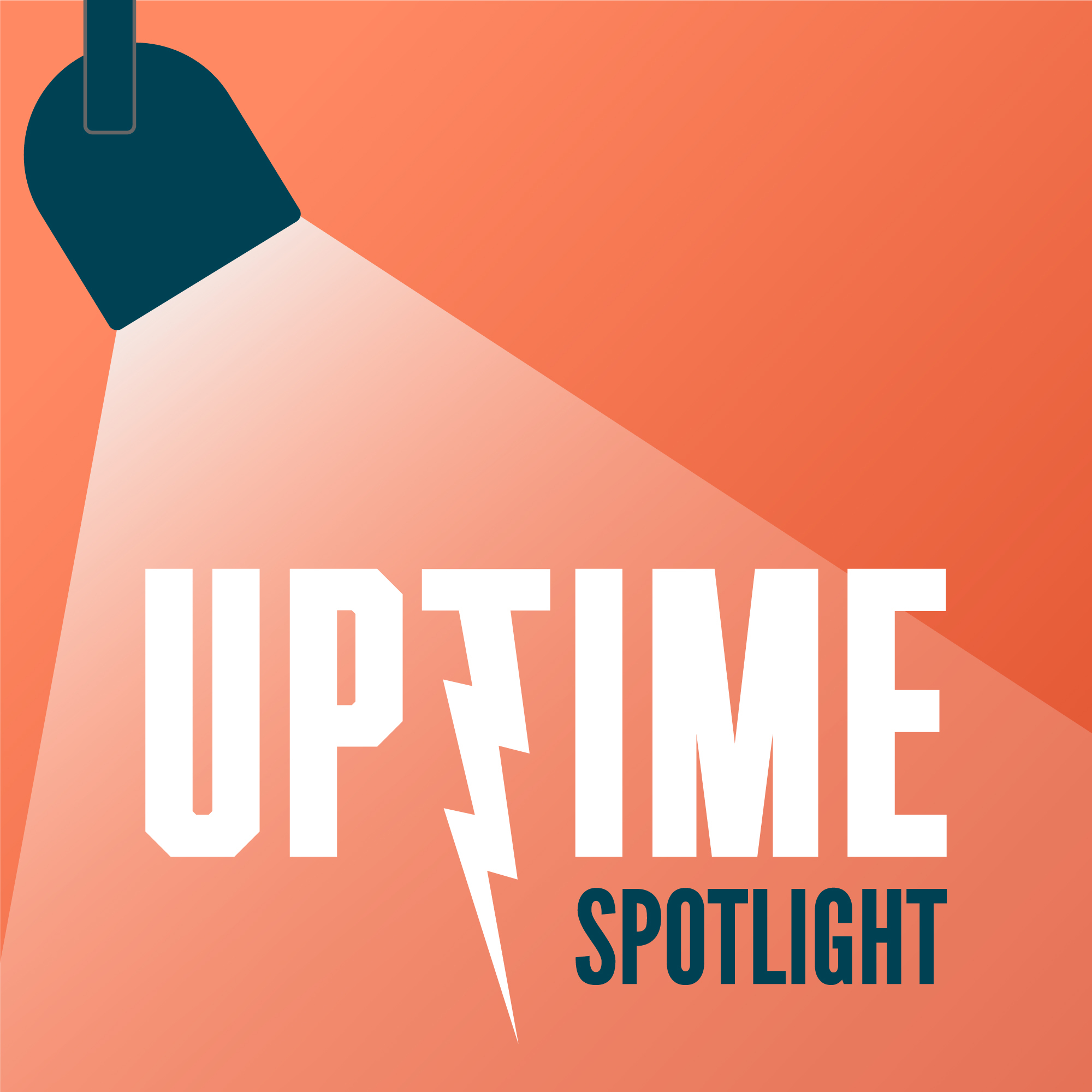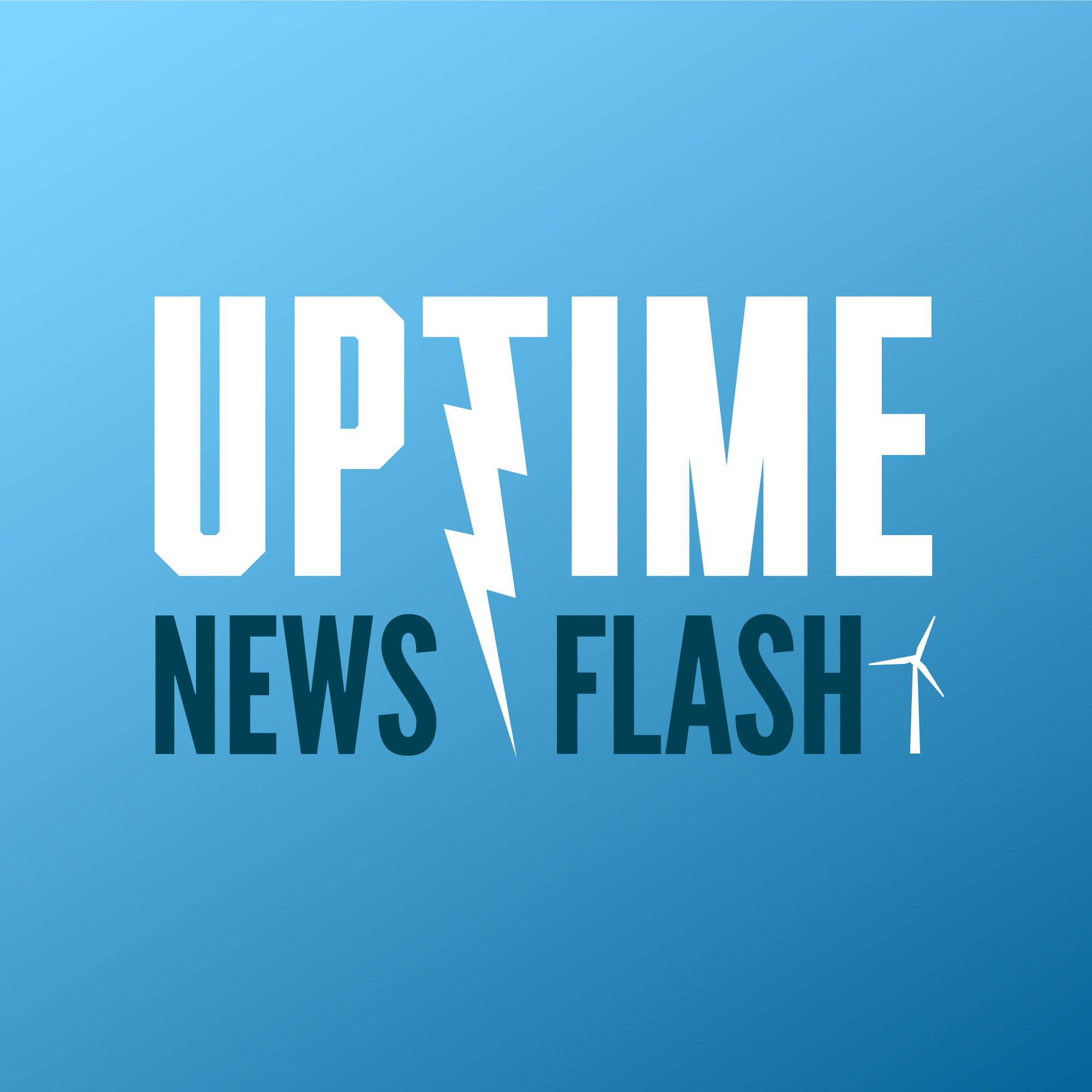TPI Files Bankruptcy, Ørsted Fundraising Round
Update: 2025-08-19
Description
The crew discusses TPI Composites' chapter 11 bankruptcy filing and Ørsted's $9 billion fundraising amid financial challenges. Joel gives an update about the 2026 Melbourne Wind O&M Conference.
Sign up now for Uptime Tech News, our weekly email update on all things wind technology. This episode is sponsored by Weather Guard Lightning Tech. Learn more about Weather Guard's StrikeTape Wind Turbine LPS retrofit. Follow the show on Facebook, YouTube, Twitter, Linkedin and visit Weather Guard on the web. And subscribe to Rosemary Barnes' YouTube channel here. Have a question we can answer on the show? Email us!
You are listening to the Uptime Wind Energy Podcast brought to you by build turbines.com. Learn, train, and be a part of the Clean Energy Revolution. Visit build turbines.com today. Now here's your hosts, Alan Hall, Joel Saxon, Phil Totaro, and Rosemary Barnes.
Allen Hall: Welcome back to the Uptime Wind Energy Podcast, Joel Saxon.
Is in Australia. You want to tell everybody where you're at at the moment?
Joel Saxum: Yeah, we're down in Melbourne. I'm here with Matthew Stead from Ping as well. Uh, Rosemary was supposed to join us, but uh, of course she's under the weather. Uh, but we are down here doing basically a, a tour to Melbourne, uh, I guess you could say, of the wind industry.
So if you don't know in Australia, a lot of the wind operators, uh, and ISPs, uh, and OEMs, to be honest with you. Are located here in Melbourne, uh, and we are talking to them all about the conference that we're gonna put on this February. Uh, it is a, the, the new and improved version of the, [00:01:00 ] uh, successful one we did last year.
So we're taking the feedback that we got right after the event last year, uh, connecting with these, uh, all the stakeholders down here and seeing what do they, what do they want to hear for the next one? What did we do well? What could be better? Uh, we're looking at venues, we're doing kind of all the above to get this, uh.
Conference up and running, and I know, uh, Matthew and I, I think we've had four to five meetings a day, every day. Um, thank you to the people that we've met with, if you're listening, because it's been really good for us, uh, very engaging, lots of feedback. So I think we've got a, we've got a good list of speakers lined up and then also, um, content for next year.
That's great. So what we're looking at right now as well, uh, if you're inking this on your calendar. For the, uh, wind energy o and m 2026 conference here in Melbourne is February 17th and 18th. This year we're gonna do two full days of, uh, panel discussions, round tables, and all kinds of information sharing.
[00:02:00 ] Uh, the goal, of course, just like last year, gather up some of the smartest people in wind and share strategies that you can take back, uh, for operations and maintenance and, and action within your company.
Allen Hall: And Phil Tarro of Intel stores out in California. And Phil, this has to be one of the. Busiest weeks in wind on the investor side.
So much happening. Osted, uh, is going to issue a $9 billion emergency fundraising round. And I want you to frame this a little bit. I, I, I've heard so much on the news and been reading a lot about this, but there's several undertones, several things happening at the same time and there really hasn't been a clear path as to why.
Osted has decided to go forward on this fundraising round?
Phil Totaro: Well, effectively it stems from two big things. One is obviously they had shown some financial losses, uh, recently, and this is going back a couple of [00:03:00 ] years now that had necessitated. You know, companies like EOR coming in and taking a 10% stake, um, just to bolster them again, we, we talked on the show before about the fact that they're not necessarily wanting to take over, although now there's some people in, you know, Denmark, that are kind of pushing the Danish government to sell off their chunk.
...
Sign up now for Uptime Tech News, our weekly email update on all things wind technology. This episode is sponsored by Weather Guard Lightning Tech. Learn more about Weather Guard's StrikeTape Wind Turbine LPS retrofit. Follow the show on Facebook, YouTube, Twitter, Linkedin and visit Weather Guard on the web. And subscribe to Rosemary Barnes' YouTube channel here. Have a question we can answer on the show? Email us!
You are listening to the Uptime Wind Energy Podcast brought to you by build turbines.com. Learn, train, and be a part of the Clean Energy Revolution. Visit build turbines.com today. Now here's your hosts, Alan Hall, Joel Saxon, Phil Totaro, and Rosemary Barnes.
Allen Hall: Welcome back to the Uptime Wind Energy Podcast, Joel Saxon.
Is in Australia. You want to tell everybody where you're at at the moment?
Joel Saxum: Yeah, we're down in Melbourne. I'm here with Matthew Stead from Ping as well. Uh, Rosemary was supposed to join us, but uh, of course she's under the weather. Uh, but we are down here doing basically a, a tour to Melbourne, uh, I guess you could say, of the wind industry.
So if you don't know in Australia, a lot of the wind operators, uh, and ISPs, uh, and OEMs, to be honest with you. Are located here in Melbourne, uh, and we are talking to them all about the conference that we're gonna put on this February. Uh, it is a, the, the new and improved version of the, [00:01:00 ] uh, successful one we did last year.
So we're taking the feedback that we got right after the event last year, uh, connecting with these, uh, all the stakeholders down here and seeing what do they, what do they want to hear for the next one? What did we do well? What could be better? Uh, we're looking at venues, we're doing kind of all the above to get this, uh.
Conference up and running, and I know, uh, Matthew and I, I think we've had four to five meetings a day, every day. Um, thank you to the people that we've met with, if you're listening, because it's been really good for us, uh, very engaging, lots of feedback. So I think we've got a, we've got a good list of speakers lined up and then also, um, content for next year.
That's great. So what we're looking at right now as well, uh, if you're inking this on your calendar. For the, uh, wind energy o and m 2026 conference here in Melbourne is February 17th and 18th. This year we're gonna do two full days of, uh, panel discussions, round tables, and all kinds of information sharing.
[00:02:00 ] Uh, the goal, of course, just like last year, gather up some of the smartest people in wind and share strategies that you can take back, uh, for operations and maintenance and, and action within your company.
Allen Hall: And Phil Tarro of Intel stores out in California. And Phil, this has to be one of the. Busiest weeks in wind on the investor side.
So much happening. Osted, uh, is going to issue a $9 billion emergency fundraising round. And I want you to frame this a little bit. I, I, I've heard so much on the news and been reading a lot about this, but there's several undertones, several things happening at the same time and there really hasn't been a clear path as to why.
Osted has decided to go forward on this fundraising round?
Phil Totaro: Well, effectively it stems from two big things. One is obviously they had shown some financial losses, uh, recently, and this is going back a couple of [00:03:00 ] years now that had necessitated. You know, companies like EOR coming in and taking a 10% stake, um, just to bolster them again, we, we talked on the show before about the fact that they're not necessarily wanting to take over, although now there's some people in, you know, Denmark, that are kind of pushing the Danish government to sell off their chunk.
...
Comments
In Channel







